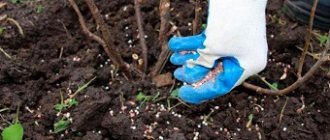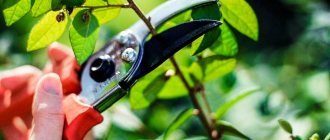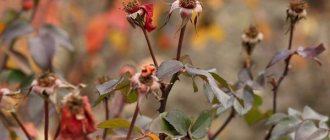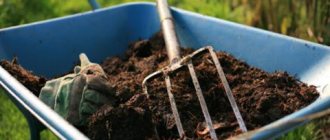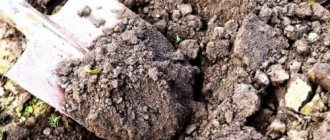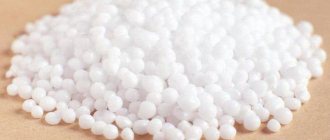Fruits and berries » Strawberries
0
371
Article rating
Kira Stoletova
It's nice to eat sweet and aromatic strawberries grown with your own hands. But it requires proper care, including preparation for winter. Let's consider what procedures need to be carried out in the fall.
How to care for strawberries in the fall - preparing the crop for winter
When to start preparing strawberries for winter?
The timing of autumn gardening procedures depends on the region in which the summer cottage is located. It is necessary to determine the moment so that the bushes have time to recover and get stronger after pruning and replanting. If prepared too late, the berry runs the risk of freezing, which will lead to its weakening, disease or death.
Cleaning times in different regions of the country:
- In outskirts of Moscow. This is the region where warm summers quickly and sharply give way to cold weather. It is recommended to carry out all preparatory activities in early September.
- In the Urals. Cut off damaged leaves in the second half of July. Then remove the beds from dead wood. At the end of August you can already prune the plant.
- In Siberia. Harsh climatic conditions make it possible to begin autumn preparations immediately after harvesting. In early August, it is recommended to remove old leaves from the lower rows and flower stalks from the plant. Before the onset of cold weather, all that remains is to periodically water and feed.
- In the Leningrad region. Increased humidity in the area contributes to the rapid development of fungal diseases and plant rotting. You can free the ridge from old leaves, dry peduncles and tendrils from the second half of August.
- Other regions. Later than everyone else, autumn berry processing activities begin in the southern regions of the country: in Crimea, Krasnodar Territory. Here summer residents begin to implement them in early October.
Main events
It is understandable to take care of the crop in the spring, during the period of flowering and fruiting, but do not forget about planting even after picking delicious berries. At this time, the strawberries “rest”, after which the plants form generative buds for the future harvest (see video).
It is necessary to prepare for winter in advance, to carry out all activities in a timely manner so that the berry garden is ready for the difficult period of cold weather.
What they do:
- trim the bushes after fruiting;
- remove unnecessary mustaches, plant rooted rosettes;
- feed the plants with fertilizer complexes (in the second half of summer and autumn);
- provide irrigation;
- treat strawberry plantings in the garden against diseases and pest damage.
On a note! It is important to observe the timing of treatments and apply fertilizers correctly so that the plants not only overwinter successfully, but also bear fruit abundantly next year.
How to properly care for strawberries in the fall?
Beginner gardeners often make mistakes when working with strawberries.
It is forbidden:
- trim bushes close to the roots;
- stop watering after harvesting berries;
- cover prematurely with thick film (if the weather is still warm), etc.
This leads to a decrease in the yield of garden land the following year. To avoid such an outcome, you should study the nuances of processing the plant in the autumn.
Cleaning and weeding beds
The first thing you need to do when holding fall events is to get rid of weeds. The grass interferes with the full ventilation of the berry crop, and takes away part of its nutrition. It’s better not to delay weeding. It is recommended to do it at the end of summer.
There is no need to pull out weeds in the fall. There is a risk of damaging the root system, and it will not have time to fully recover before the onset of cold weather.
Trimming
One of the controversial issues among gardeners is whether strawberries should be pruned. Experienced gardeners claim that after the procedure the plant will spend all its energy on forming new green mass. By the time it gets colder, the berry will be weakened.
Opponents of the procedure remove leaves, leaving only short stems, only if signs of damage or disease are noticed on them.
To perform partial trimming, do the following:
- Prepare pruning shears or sharp garden shears. Immerse the instrument in the disinfectant solution for a few seconds. Use gloves to protect your hands.
- Carefully trim off dry, weakened or damaged leaves. Remove leaf blades with red coloring or spots.
- Place waste in containers and take it outside the site. It cannot be left on the ridge or between the rows. The process of rotting will begin and spread to healthy parts of the bush. Also, bacteria multiply under rotten cuttings, which are not always beneficial for the plant.
It is better not to touch large and lush leaves. In winter, they will become reliable protection from frost and wind.
It is better not to prune remontant varieties. This is justified by the fact that strawberries bear fruit until frost. And removing leaves in cold weather will not allow the crop to recover. But it is necessary to remove leaves with signs of disease or damage. This can be done on warm, dry days during the fruiting process.
An experienced gardener will tell you about the pros and cons of pruning strawberries for winter in the following video:
Loosening and hilling
Late loosening can negatively affect the condition of the root system of berry bushes. But, this event helps saturate the soil with oxygen. In the future, it will have a positive effect on the growth and development of the plant. The golden mean is to loosen the rows at the end of August.
Hilling up is a necessary procedure. During the summer season, the plant develops new root shoots, which form in the upper part of the rhizome. If you do not hill up at the end of summer, the root system will be exposed and will freeze out from the winter cold.
Watering
Watering the crop is required until the beginning of October. In dry weather, abundant irrigation of the soil once a week is sufficient. Consumption is 12 l/sq.m. When the rains begin, stop the procedure.
The water should be warm. Temperature not less than 18ºC.
Top dressing
The most favorable period for feeding berry crops is the second half of September or the beginning of October. The soil should be fertilized after pruning.
The main purpose of fertilizing is to increase the nutritional level of garden berries in order to quickly recover and improve winter hardiness.
There are 2 types of autumn feeding:
- Organic. The most common is mullein. Fertilizer helps restore microflora and saturate with nutrients. The cooking method is as follows:
- take 1 kg of organic matter and add 5 liters of water;
- leave for 14 days;
- Next, prepare a working solution in the ratio of 1 liter of infusion per 10 liters of water;
- use 0.5 liters per bush for horse feeding.
- Mineral. Dilute potassium salt with water in a ratio of 20 g of the substance per 10 liters of water. Water the row spacing with the resulting solution. You can also use superphosphate (10 g per 10 l).
It is important to observe the dosage of fertilizer. If you use it in smaller quantities, the plant will not receive enough nutrients. Autumn treatment will be ineffective.
Exceeding the norm of mineral fertilizer will lead to the accumulation of nitrates, which will negatively affect the growth of berry bushes, the quantity and quality of the future harvest. An excess of organic nitrogen-containing additives activates the growth of the crop at a time when it should be resting.
Pest and disease control
In the first autumn months, signs of various plant ailments become more noticeable on the bushes. This is the optimal time to treat the plantation with specialized drugs against diseases and pests.
You must first weed the plants thoroughly. After all, weeds take away moisture and nutrients, and also interfere with the ventilation of plantings. However, you should pay attention to the following.
Removing weeds in the fall is dangerous: you can damage the strawberry roots, which will not have time to recover before the cold weather. Therefore, it is better to hold the event at the end of summer.
Strawberry processing
Pre-winter treatment of strawberries from pests and diseases is ridding the bush of existing problems and prevention for the future harvest. The best time to carry it out is August, after the last harvest of berries.
From diseases
The most common disease is spotting. You can get rid of it using a 1% solution of Bordeaux mixture.
Do the following:
- Dissolve 100 g of the active ingredient in 2 liters of water. It is better to use warm liquid with a temperature of up to 50º.
- Mix the contents thoroughly until a homogeneous solution is formed.
- Fill with cold water to a volume of 5 liters.
- In a separate container, combine lime according to the instructions so that the total amount is 5 liters.
- Mix 2 solutions. It is better in a plastic or enamel container, because in a metal container the oxidation process will begin.
Spray the strawberry bush with the resulting solution. Should be used immediately after preparation. Apply in the morning, evening or in cloudy, dry weather during the day. If it rains after carrying out the procedure, repeat the procedure.
From pests
The most common strawberry pests are spider mites.
You can get rid of them, as well as other insects, as follows:
- Dilute 2 tbsp in 10 liters of water. l. vegetable oil and the same amount of wood ash.
- Pour in 2 tbsp. l. vinegar.
- Pass 20 g of soap (preferably laundry soap) through a grater. Add 2 tbsp. l. component to the general content. It is allowed to take 2 tbsp. l. liquid soap.
- Mix the fertilizer thoroughly until a homogeneous consistency is obtained.
Spray the bushes and the soil around them with the solution. Do the treatment in early October (2 - 3 weeks before the expected cold weather).
Trimming
Around the beginning or mid-September, the third stage of caring for strawberries in the fall and preparing them for winter begins - removing old leaves. However, there is no consensus on whether it is worth trimming leaves in the fall. Some farmers are strongly against this measure, explaining that any intrusion into the natural cycle will have a negative impact on the crop.
On the contrary, adherents of autumn pruning believe that minor stress will only help increase strawberry yields. We advise you to check both points of view in practice: trim half of the plot, and leave the other part of the beds with leaves. The results of the next season will demonstrate which option is more effective.
So, how to properly prune berry bushes in autumn? This procedure begins after the completion of the main fruiting. The bushes are trimmed using scissors or sharp pruners.
The basic rule of pruning is: don't overdo it. For each bush, you need to cut off the leaf blade itself, preserving the protruding stems. Thus, the growing point remains intact, and the bushes soon begin to sprout new leaves. All tendrils of berry bushes also need to be removed.
Frost protection
One of the most important procedures in the fall is protecting strawberries from freezing. For this purpose, it is necessary to create a reliable shelter from frost and snow. Mulching or agrofibre will help solve the problem.
Mulching
In the second half of August, mulch should be laid.
Suitable for this purpose:
- cut grass, which must first be sorted out, shaken, soaked and dried in the sun;
- needles;
- tree bark crushed into large pieces;
- wood shavings or large sawdust.
It is permissible to use peat, but in small quantities. Otherwise, soil over-oxidation will occur.
Mulching is done like this:
- Water and loosen the strawberry beds.
- Place a layer of mulch about 2 cm deep on the soil around the bushes and between the rows.
Agrofibre
It is better to replant strawberries under agrofibre in the fall. The material will protect the plant from frost in winter, and from harmful vegetation in spring.
Boarding procedure:
- Keep the soil free of weeds.
- Dig it up.
- Loosen it.
- Apply fertilizer.
- Spread agrofibre to suit the size of the bed.
- Make holes in it where the holes will be located.
- Plant strawberry seedlings in a new location.
To cover and not to cover?
Today there are many varieties that are characterized by excellent winter hardiness. If there is at least 30 cm of snowfall and in regions with a temperate climate, berry bushes do not need to be covered. But if precipitation does not always occur, then to prevent freezing the plants must be protected.
The specific method of insulation is selected in accordance with the weather conditions of the area. Lowering the air to -8°C already carries the risk of damaging flower buds in heat-loving varieties. The appropriate method of covering the plantation is determined based on:
- presence or absence of snow cover;
- temperature conditions;
- location of the beds (depth of groundwater, protection from prevailing winds, lighting).
Note! Under no circumstances should strawberries be covered in advance - this can cause increased evaporation of heat and moisture. Such bushes run the risk of blooming or being banned: vegetating plants quickly die from the cold.
It is advisable to insulate the berry plantation after the first light frosts have passed. A plant hardened by negative temperatures will become more resilient and better survive the cold.
Features of preparation for winter of different varieties
The rules for preparing strawberries for winter are identical for different varieties of berries. There are only small nuances for the usual and remontant type of plant.
Regular
The berry begins to bear fruit early and finishes yielding by the end of July. Basic procedures for preparing for winter can begin as early as August.
The variety tolerates winter well. Vegetable mulch is suitable as a cover. For example, pine needles. It should be laid out after the start of frost.
Remontantnaya
Remontant varieties of strawberries continue to bloom until the onset of cold weather. It is recommended to start preparing for winter no earlier than September.
This variety should be well saturated with moisture before winter. It is necessary to regularly water in the morning or evening with 5 liters of water per sq.m.
Plants usually do not tolerate winter well. You need to make a good shelter. For this purpose, use a thick layer of straw or dry leaves.
Autumn watering
Before the winter cold, strawberries will be less vulnerable if their roots are saturated with moisture. Therefore, such a procedure as autumn watering should not be neglected. I usually water the berries in two stages.
I carry out the first abundant watering in September, it is during this period that the formation of berry buds occurs. I water the strawberries for the second time in October. If autumn is rainy, there is no need to water the plant additionally.
Advice from experienced gardeners
Experienced gardeners recommend taking into account several important nuances when preparing strawberries for winter.
Subtleties of processing:
- For the first time before winter, trim only one ridge of the plant, leaving the rest unchanged (this will help determine how the plants overwintered better);
- Fertilizers containing chlorine and large amounts of nitrogen should not be used in the fall;
- It is not recommended to replant into frozen ground (if it was not possible to do it on time, it is better to postpone the procedure to spring);
- As the snow falls, throw it with a shovel onto the bed with strawberries (it will serve as additional cover).
More tips from experienced gardeners can be found in the following video:
Pre-winter processing of strawberries will allow the crop to wake up faster in the spring. It will contribute to the appearance of a high and high-quality harvest in the summer, since growth buds are formed in the fall.
0
0
Copy link
Optimal timing for removing cover from a strawberry bed
Garden strawberries are one of those plants that begin to grow earlier than others. As soon as spring arrives, as soon as the first March sun begins to warm up, the gardener must keep his “ears open” in order to remove the cover from the strawberries in a timely manner. In our country, shelter elimination is usually carried out in the first half of March. If you miss the right moment, the result can be disastrous: the strawberries will stagnate and partially die, so you won’t be able to wait for a harvest.
And the last thing you should remember: if you find at least one, and even then not the most confident, reason why the strawberry needs to be provided with shelter, be sure to do it. Even if you doubt the need. A well-organized shelter that is removed in a timely manner will never cause harm.
Gardener mistakes
Not all gardeners know thoroughly how to care for strawberries in the fall so that there is a good harvest next season. And due to a lack of experience and information, they make a lot of mistakes.
- They forget to feed. Fertilizer must be applied by vein in the fall.
- They believe that small-fruited crops are also good, and do not plant bushes in a new place. The reason for the low quality of fruits in this case is diseases, pests, and soil depletion. Replanting, feeding, and disease prevention are necessary.
- Cover strawberries in the southern regions for the winter months. As a result, the bushes wither and die.
- In server areas, only bushes are insulated, forgetting about row spacing. In this case, the soil freezes and the strawberry roots deteriorate.
This is interesting! Strawberries can be grown on a warm balcony in small pots and enjoyed the fragrant fruits in winter.
